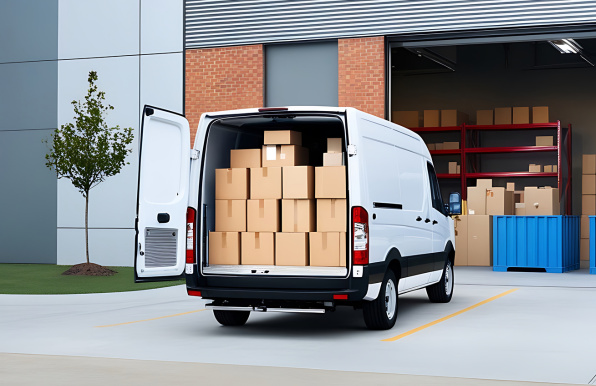- Platform
Top technologies In transportation industry that help businesses build efficient supply chains
In recent times, a lot of industries have faced disruptions owing to the rapid evolution of technology and the transportation and logistics industry is no different. With customer expectations ballooning at an exponential pace, it is these evolving technologies that come to the save by helping the organizations meet them.
For decades supply chain and logistics stakeholders have been facing major challenges with regards to lack of visibility, inability to track delivery fleet, unexpected and unaccounted delays, theft of goods, etc. These challenges translate into huge monetary losses for the companies. With the advent of technologies like IoT, Machine Learning and Blockchain, it has become easier for organizations to address these problems and improve operations and build a customer-centric supply chain.
Before we get into the impact of technology on the transportation industry, let us first look at the three major technological breakthroughs which have had a disrupting impact on the industry and understand them in a brief.
The Three Technologies
1. IoT (Internet of Things)
IoT can fairly be said to be the extension of Internet connectivity into physical devices and everyday objects. The objects are embedded with electronics, Internet connectivity, and other forms of hardware, these devices can communicate and interact with others over the Internet through a wired or wireless connected network, which allows us to remotely monitor and control them.
2. Machine Learning
Machine Learning is a subset of Artificial Intelligence which provides a machine the ability to learn and improve from experience without explicitly being programmed. This is facilitated by machine learning based on patterns, trends, past data, etc. This allows the machines to evolve by analyzing the huge amount of data flowing in and using it effectively to derive useful insights.
3. Blockchain
Blockchain can be said to be a list of records called blocks which are linked using cryptography. Each block contains a cryptographic hash of the previous block or a timestamp. This prevents modification of data. Using Blockchain businesses can monitor and track any minute changes in the data in an effective way. It was developed to transact cryptocurrency and has grown exponentially finding applications in different sectors.
Now, let’s glance through some of the ways these three disruptive technologies are impacting the supply chain and logistics industry.
Their Impact
The Impact of IoT
One of the biggest opportunities in logistics right now is to leverage IoT to make logistics more visible and traceable. “With the IoT, the supply chain will have unprecedented access to data valued by internal and external stakeholders. This presents an opportunity for supply chain groups to co-develop new information-based solutions for individual customers or markets,” highlights Gartner in a report. By using the huge inflow of data from different sources to identify patterns and predict consumer preferences as well as potential breakdowns in the supply chain. Innovative IoT solutions are also powering automatic monitoring of cargo, smart driver management, theft prevention, and dynamic route planning. Hence, leveraging IoT businesses can optimize logistics processes to ensure faster and cost-effective deliveries.
The Impact of Machine Learning
Machine Learning can analyze large historical data sets and help businesses predict risks, quickly identify inefficient routes at the planning stage itself, reduce delays and generate accurate ETAs. Theft of goods-in-transit is a common logistics problem across many geographies. Using ML businesses can understand why there have been delays in a particular route and if a particular route is prone to thefts. This helps delivery stakeholders avoid such routes. Machine learning also empowers businesses to stay OTIF (on-time in-full delivery) compliant, a key requirement especially in the retail industry.
Also, ML’s ability to generate accurate ETAs is a game-changer in this world driven by customer demands. If your customers know when their orders will arrive, they can plan production and manage demands more efficiently by eliminating excess inventory, improve warehouse management and ensure greater productivity.
The Impact of Blockchain
Blockchain can help businesses drastically improve supply chain visibility. It makes provenance tracking easy. Using data from IoT devices, sensors, and RFID tags, blockchain and quickly answer queries on product origin, ownership, and current location. It makes financial transactions secure by helping businesses use cryptocurrency. This significantly reduces the dependency on human intervention and leaves no room for manipulations.
Blockchain also makes data interoperable and empowers supply chain and logistics managers to securely share information with manufacturers, 3PL providers, suppliers, vendors among others.
While there are many disruptive technologies that are positively impacting the transportation industry, these happen to be the building blocks of creating a future-ready and sustainable supply chain.

Komal Puri is a seasoned professional in the logistics and supply chain industry. As the AVP of Marketing and a subject matter expert at FarEye, she has been instrumental in shaping the industry narrative for the past decade. Her expertise and insights have earned her numerous awards and recognition. Komal’s writings reflect her deep understanding of the industry, offering valuable insights and thought leadership.
Let's Talk to Our Experts and Optimize Your Deliveries Today!
An expert from our team will reach out within 24 hours



